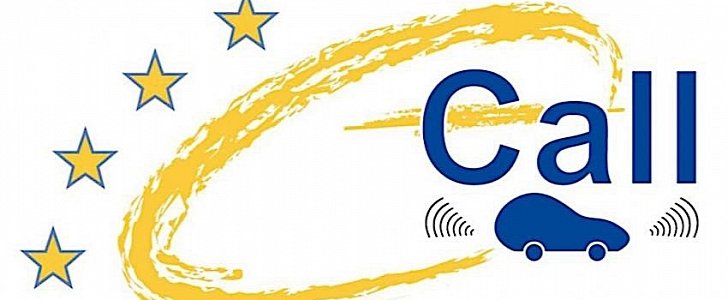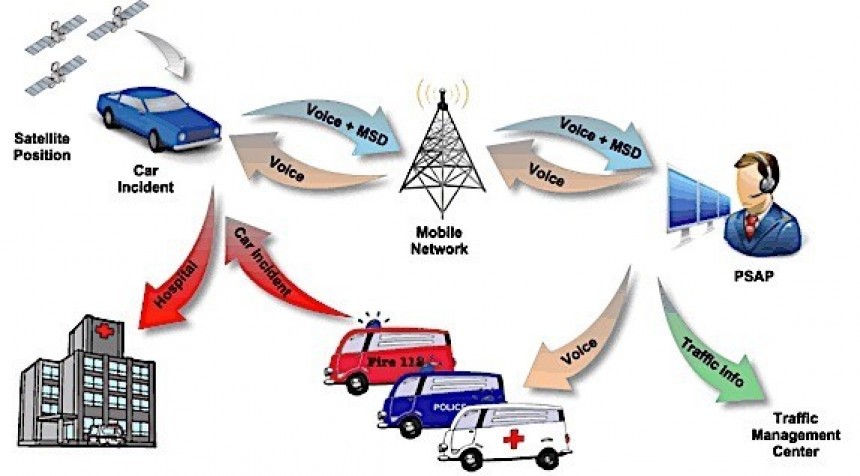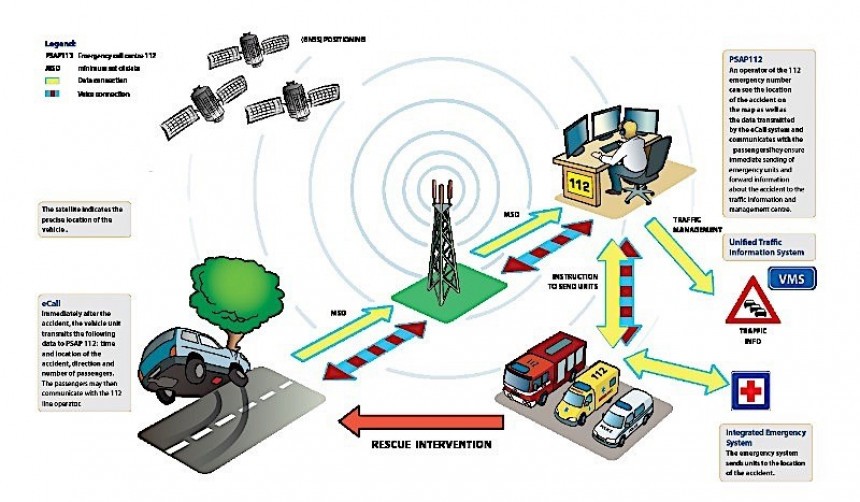Starting the 1st of April, all cars manufactured on the European continent are required to be fitted with the so-called eCall system, a feature that automatically dials Europe's single emergency number 112 in the event of a serious road accident.
The system was created back in the early 2010s, with the initial roll-out date set for 2013. A pilot run was conducted in the Czech Republic, but for some reasons European regulators failed to impose it at the set date.
The European Commission says that in 2012 (the year before the system was tested in the Czech Republic), on the roads of the continent nearly 30,000 people have been killed, and an additional one and a half million have been injured in car crashes. The goal of the eCall system is to allow for faster response time from emergency services, that can lead to more lives being saved.
The numbers have pretty much remained unchanged for the following years, including the over 130 billion euros ($155 billion) spent on car repairs and additional measures resulting from car crashes.
According to EU studies, the implementation of the eCall system would increase emergency response times by 40% in urban areas and 50% in the countryside. Fatalities are likely to decrease by at least 4% and the number of severe injuries by 6%.
WHAT IS IT AND HOW IT WORKS
The eCall system is made up of a series of in-vehicle sensors and processors fitted including in the airbags of the cars, linked with a communications device and a GPS tracker, all running thanks to a SIM card.
When a car goes through a severe crash, one that requires safety systems like airbags to be deployed, the eCall automatically kicks in and calls the Europe-wide emergency number 112. Using the GPS worldwide satellites, as well as Europe’s Egnos and Galileo, the system identifies both the location of the car and the appropriate emergency call centre to be notified.
After establishing the connection, eCall relays to the dispatcher information about the accident. The dispatcher then notifies the appropriate response teams which will intervene at the scene.
eCall will also work when triggered by the driver. In the event someone witnesses a car crash, they can push a button fitted on dashboard. The system then does just as described above, the difference being the driver will be contacted by the dispatcher to provide additional details about the incident.
Although most PSAPs are capable of identifying caller location, including from landlines, eCall will provide the location of the crash in information packs of 140 bytes called MSD - minimum set of data.
Aside for the location of the crash, MSD also contains information about the type of vehicle involved (including whether it is a diesel, petrol, LPG or some other type of car) and a time-stamp.
Ever since the idea surfaced, there have been people in Europe saying eCall will be used for more than making emergency calls. Some said it might be used to track a vehicle’s speed, hence making drivers vulnerable to fines. Others are worried about being tracked all the time. And few have expressed concerns about an increase in price for new vehicles.
The European Union says eCall will not act as a black box. That means it does not constantly record the position of the vehicle or its speed. Authorities say only a few data is recorded to determine the position and direction of the vehicle just before the crash. This data is only sent to emergency services, EU says, adding that local traffic management centers are notified as well.
Europe estimates the cost of fitting such a system in vehicles at 100 euros ($120) per car. That estimate was however made three years ago, when the system was supposed to be implemented.
Cars manufactured after April 1, 2018, have not yet reached dealers. They would do so later in the year, so it’s likely the real cost of eCall will be more clear then.
The European Commission says that in 2012 (the year before the system was tested in the Czech Republic), on the roads of the continent nearly 30,000 people have been killed, and an additional one and a half million have been injured in car crashes. The goal of the eCall system is to allow for faster response time from emergency services, that can lead to more lives being saved.
The numbers have pretty much remained unchanged for the following years, including the over 130 billion euros ($155 billion) spent on car repairs and additional measures resulting from car crashes.
According to EU studies, the implementation of the eCall system would increase emergency response times by 40% in urban areas and 50% in the countryside. Fatalities are likely to decrease by at least 4% and the number of severe injuries by 6%.
WHAT IS IT AND HOW IT WORKS
The eCall system is made up of a series of in-vehicle sensors and processors fitted including in the airbags of the cars, linked with a communications device and a GPS tracker, all running thanks to a SIM card.
When a car goes through a severe crash, one that requires safety systems like airbags to be deployed, the eCall automatically kicks in and calls the Europe-wide emergency number 112. Using the GPS worldwide satellites, as well as Europe’s Egnos and Galileo, the system identifies both the location of the car and the appropriate emergency call centre to be notified.
After establishing the connection, eCall relays to the dispatcher information about the accident. The dispatcher then notifies the appropriate response teams which will intervene at the scene.
eCall will also work when triggered by the driver. In the event someone witnesses a car crash, they can push a button fitted on dashboard. The system then does just as described above, the difference being the driver will be contacted by the dispatcher to provide additional details about the incident.
PSAP and MSD
The information about the crash is being sent by eCall to a so called PSAP, or public-safety answering point. These are in fact the call centers from where operators relay information about incidents to the proper emergency services.Although most PSAPs are capable of identifying caller location, including from landlines, eCall will provide the location of the crash in information packs of 140 bytes called MSD - minimum set of data.
Aside for the location of the crash, MSD also contains information about the type of vehicle involved (including whether it is a diesel, petrol, LPG or some other type of car) and a time-stamp.
CONCERNS
The European Union says eCall will not act as a black box. That means it does not constantly record the position of the vehicle or its speed. Authorities say only a few data is recorded to determine the position and direction of the vehicle just before the crash. This data is only sent to emergency services, EU says, adding that local traffic management centers are notified as well.
Europe estimates the cost of fitting such a system in vehicles at 100 euros ($120) per car. That estimate was however made three years ago, when the system was supposed to be implemented.
Cars manufactured after April 1, 2018, have not yet reached dealers. They would do so later in the year, so it’s likely the real cost of eCall will be more clear then.






